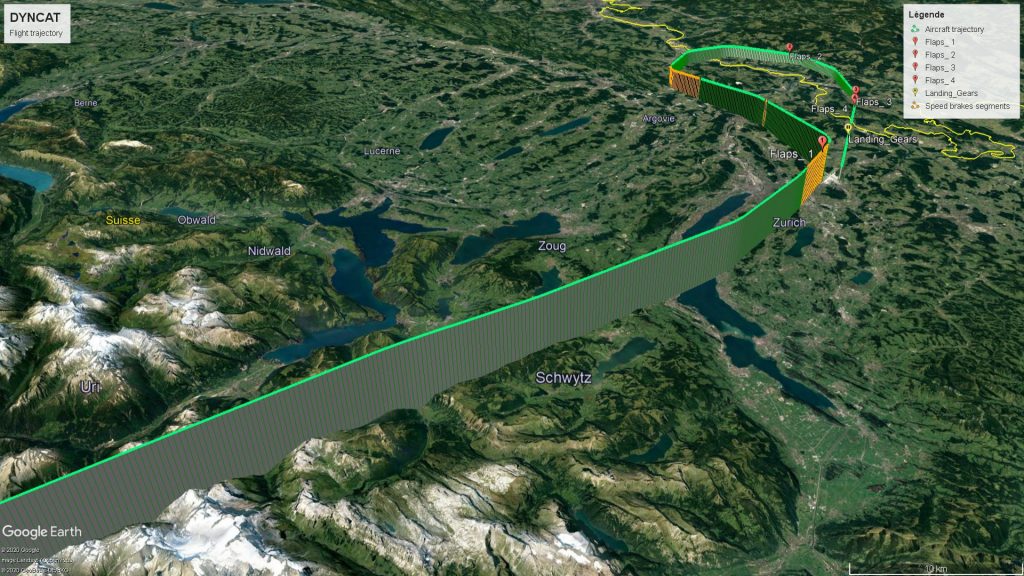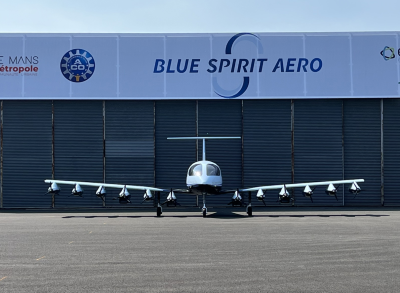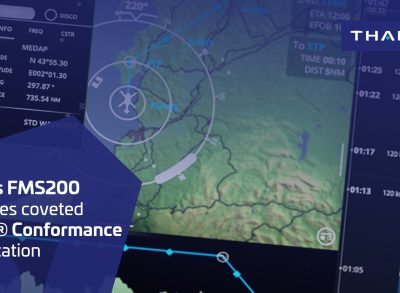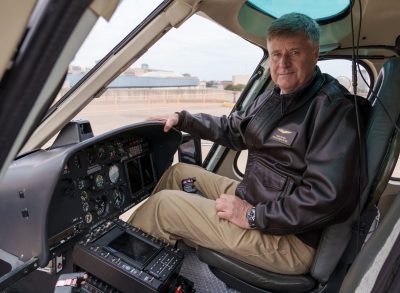How the DYNCAT project is shaping the environmentally-friendly future of approach profiles

DYNCAT (Dynamic Configuration Adjustment in the Terminal Maneuvering Area) is a flagship project that has received funding from the SESAR Joint Undertaking, the technological pillar of Europe’s Single European Sky initiative. The project is led by a consortium made up of the German Aerospace Center (DLR), Swiss International Air Lines, the Swiss Federal Laboratories for Materials Science and Technology (Empa), Swiss SkyLab Foundation, and Thales.
The project is focused on reducing the environmental footprint of aircraft during their approach phase ahead of landing. This part of flight is synonymous with key piloting decisions regarding the extension of the aircraft’s flaps, slats and landing gear, all of which aim to ensure a safe landing. They are thus often conservative, on the basis of estimated remaining distance combined with approximate weather conditions and air traffic control restrictions. Those decisions, in turn, have a substantial impact on the aircraft’s noise levels and fuel consumption.
Incorporating the function into tomorrow’s flight management systems
The challenge of the DYNCAT project is therefore to propose improvements to existing onboard and ground procedures, pinpoint potential technological and regulatory changes, and optimize systems for low-noise and low-emission approaches. Working with extensive operational flight data, the related air traffic control instructions, weather data, and noise measurements, the DYNCAT concept will benefit from the knowledge, experience and findings of a solution that has already been put to the test on board a DLR Airbus A320 over a series of 90 approaches to Zurich Airport. The results were extremely positive, both in terms of noise levels and fuel savings. Thales’s mission, as part of this wider DYNCAT project, is now to work with the concept and prototype such a function into future Flight Management Systems (FMS), so that it forms an integral part of the aircraft’s piloting systems.
The next months represent an exciting and crucial phase regarding Thales’s contribution to the DYNCAT project. Work has commenced on integrating this innovative function into the PureFlyt™ new-generation Flight Management System, with full prototyping and simulator trials to follow throughout 2021 and 2022. As well as incorporating the function into the wider avionics environment available at the pilot’s fingertips, Thales’s work is aimed at continuing to develop the function, validating and measuring the associated benefits, as well as fine-tuning usability and human factor aspects.
The end-product is set to have major repercussions on the environmental credentials of aircraft on their final approach, given that DYNCAT will enable a major shift from static computing to dynamic computing, drawing on real-time air and ground data as well as legacy information to deliver optimal, predictable approach flight profiles. As a valuable piloting tool, the DYNCAT function will systematically aid pilots to make the right decisions at the right time, with no excess energy being lost, fuel being burnt, or unnecessarily high levels of noise being emitted.
A number of key milestones now lie ahead, both internally for Thales and in conjunction with the other DYNCAT consortium members, and we will continue to monitor progress over the coming months.
- Further information about the DYNCAT project on the SESAR website here: https://www.sesarju.eu/projects/dyncat
- Additional technical information here: https://www.dyncat.eu and here: https://www.skylab.swiss/dynamic-configuration-adjustment-in-the-tma-dyncat/
- Links to partner websites: German Aerospace Center (DLR), Swiss International Air Lines, Swiss Federal Laboratories for Materials Science and Technology (Empa), Swiss SkyLab Foundation, Thales
This project has received funding from the SESAR Joint Undertaking under the European Union's Horizon 2020 research and innovation programme under grant agreement No 893568.
- Main illustration: a 2019 aircraft trajectory (Earth data: Google).





